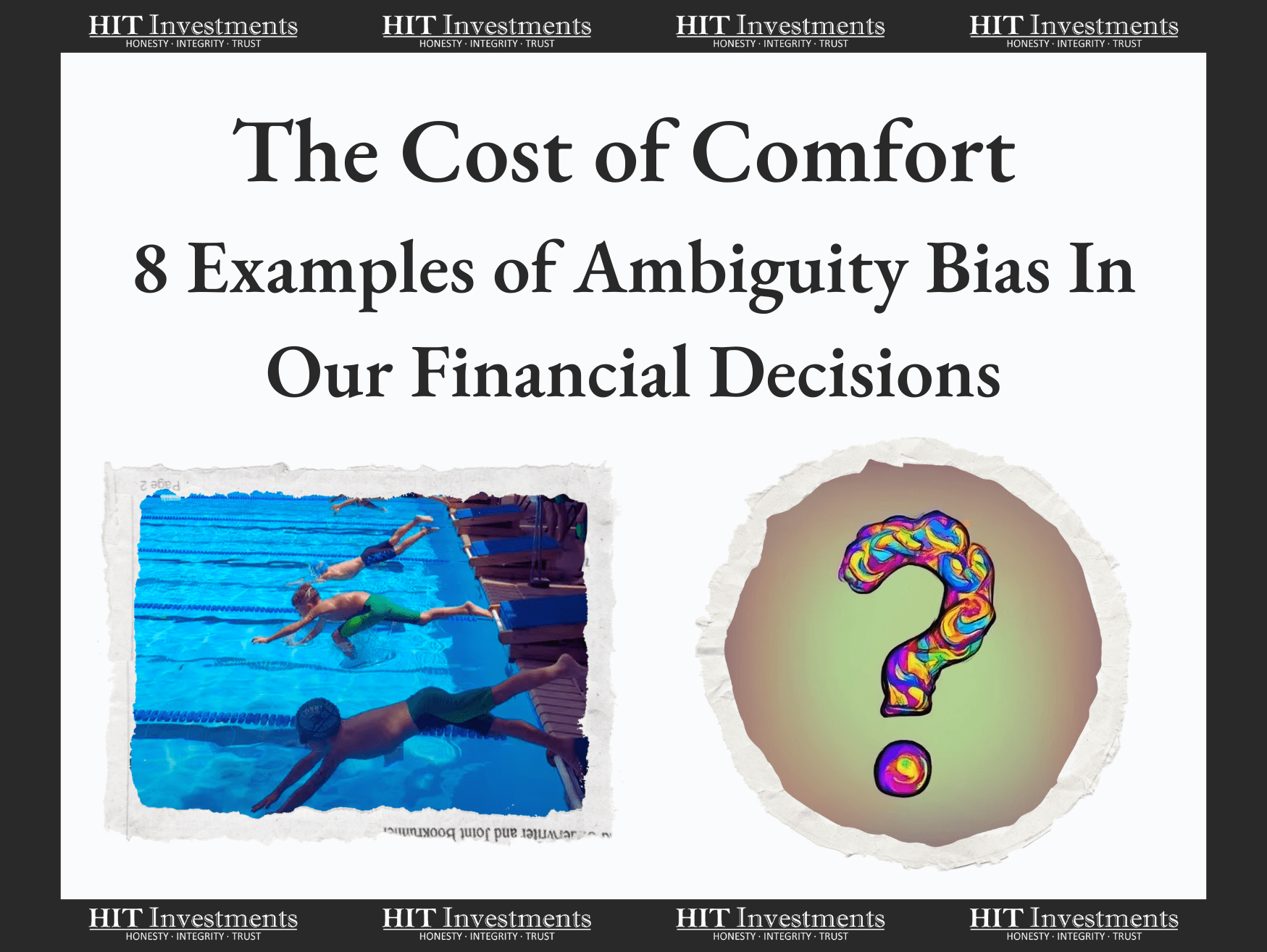The Cost of Comfort – 8 Examples of Ambiguity Bias In Our Financial Decisions
Ambiguity bias is our natural inclination to prefer the familiar option over the unknown, even when the latter may offer equal or better outcomes.
The Ellsberg Paradox: Balls and Urns
This cognitive bias was first highlighted by Daniel Ellsberg in 1961 through his thought experiment involving two urns: one with a known 50/50 mix of red and black balls, and another with an unknown mix of red and black balls. The folks in Ellsberg’s study consistently chose to bet on the urn with the known composition, despite both urns offering equal probabilities.
Financial Ramifications and Cultural Factors
This bias has significant financial implications, particularly in western cultures where discussions about money are often taboo, and personal finance education is lacking. Consequently, our financial decisions are often ambiguous and uncertain.
Stephen’s Example of Ambiguity Bias
I am currently the treasurer of our community swim team and in the last month I proposed moving our idle cash from a 0% interest checking account to one offering 5% interest. However, my request was ultimately denied by the league board. The reason for the initial denial appears to be because the league is not (yet) comfortable with our team (and soon the entire league) earning interest.
More Common Examples of Ambiguity Bias in our Financial decisions
-
- Banking Choices: Keeping cash in a low interest, high fee bank account like my swim team, rather than upgrading to a no fee, interest-paying bank or brokerage account.
- Investment Options: Prefering to invest solely in domestic stocks rather than diversifying with international stocks (known as home bias)
- Investments Options: Choosing an annuity or fixed income bonds over micro-caps or startups when your risk tolerance and capacity is high and your goal is capital appreciation.
- Investment Account Options: Opting to keep cash and investments in a taxable account rather than a tax-advantaged one (529, IRA, etc.) or opting to use a historical employer account versus moving to a discounted brokerage.
- Roth and Traditional IRAs: Opting to keep your retirement monies in a pre-tax account versus figuring out if a Roth IRA is a better option.
- Insurance Options: Choosing to renew home, health, car and life insurance policies due to unfamiliarity with alternative options.
- Credit and Debt Management: Using old credit cards rather than exploring alternatives, or maintaining debt on assets like houses or cars without considering the benefits of paying them off.
- Investment Advice: Taking financial advice from a colleague who sells insurance, annuities, or stocks versus learning yourself or seeking advisors that are educated, independent, and put your interests first (fiduciaries).
Conclusion
Recognizing and addressing your own ambiguity bias can help you make sound financial decisions. By seeking education, exploring new options, and embracing some level of calculated risk, you can navigate financial ambiguity with greater confidence and work to achieve better outcomes for you, and your community…’s swim team😀.



Leave A Comment